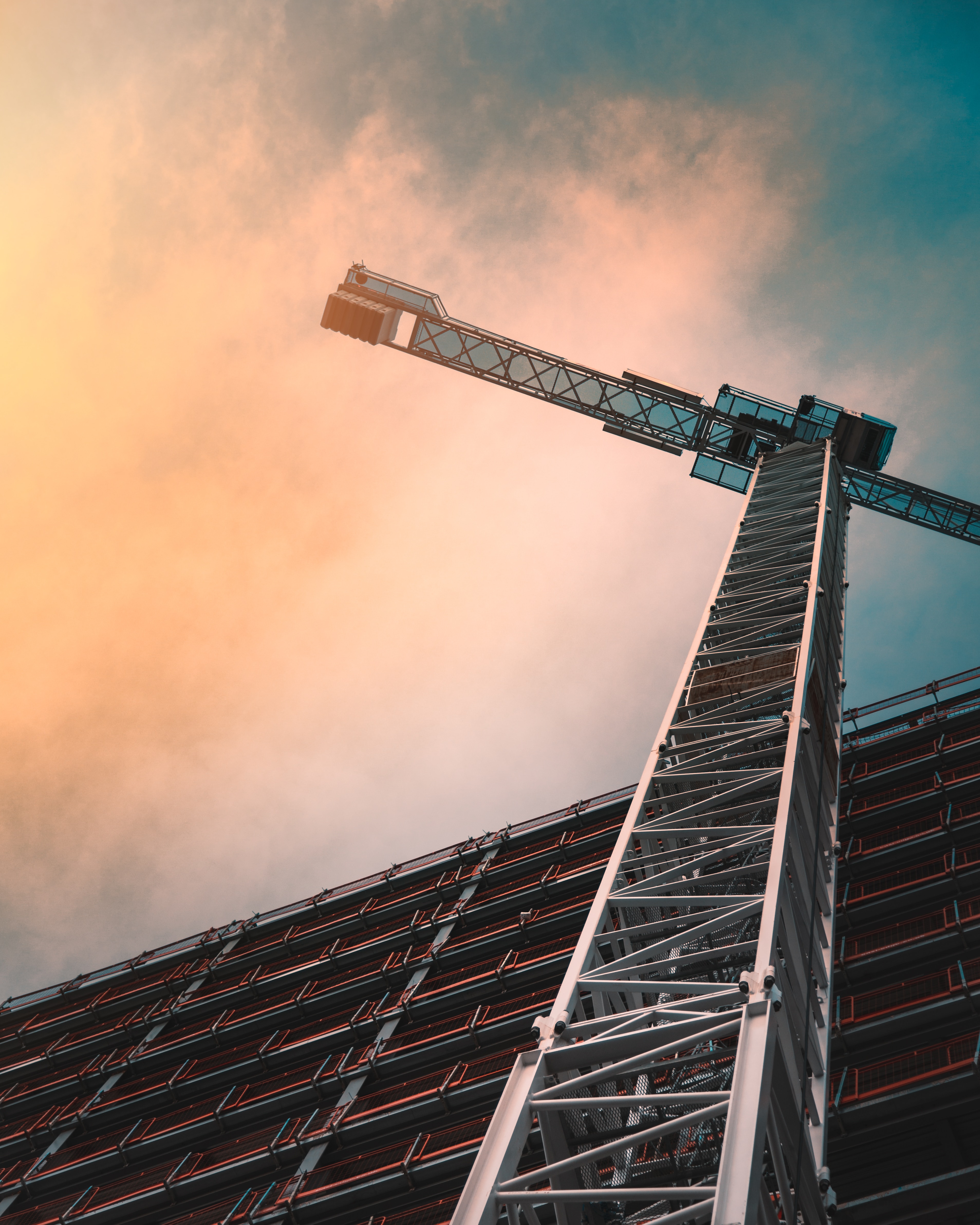Previous large-scale clarifications on unauthorised construction were provided in Joint Resolution No. 10/22 of the Plenum of the Supreme Court of the Russian Federation and the Plenum of the Higher Arbitrazh Court of the Russian Federation dated 29 April 2010 (“2010 Resolution”), and in Information Letter No. 143 of the Presidium of the Higher Arbitrazh Court of the Russian Federation dated 9 December 2010 and the Court Practice Review of Cases Involving Unauthorised Construction approved by the Presidium of the Supreme Court of the Russian Federation on 19 March 2014. In 2018, significant amendments were made to article 222 of the Civil Code of the Russian Federation which, to some extent, took into account the abovementioned clarifications, and the Town Planning Code of the Russian Federation was supplemented with Chapter 6.4 on the demolition of capital construction projects, including the demolition of unauthorised structures or bringing them into compliance with the existing requirements.
As time passed, the court practice of applying article 222 (as amended) of the Civil Code of the Russian Federation and the new provisions of the Civil Code of the Russian Federation has evolved. Such practice was summed up in the review of the Supreme Court of the Russian Federation approved on 16 November 2022 by the Presidium of the Supreme Court of the Russian Federation.
Further to this review, the Supreme Court of the Russian Federation has updated and expanded its clarifications of these issues and released the Resolution. In many respects, the Resolution reiterates the provisions of article 222 of the Civil Code of the Russian Federation and the previously established approaches in court practice, but it also contains some new and useful clarifications. In addition, the Resolution repealsParagraph 48 of the Resolution the section of the 2010 Resolution dealing with disputes related to unauthorised construction (sections 22-31).
In this update, we have highlighted what we consider to be the most useful and interesting provisions of the Resolution.
1) Properties which may be recognisedParagraphs 5 and 6 of the Resolution to be unauthorised structures
Article 222 of the Civil Code of the Russian Federation applies to the unauthorised construction of buildings and structures which meet the criteria of immovable property. A structure may be recognised to be unauthorised at any stage of construction, starting with laying the foundation. Article 222 of the Civil Code of the Russian Federation does not apply to:- properties that are subject to the regime of immovable things by virtue of a direct indication in the law, but are not such by virtue of their natural properties (e.g., aircraft, sea vessels, inland waterway vessels subject to state registration);
- movable properties (e.g., stalls);
- inseparable improvements of the land plot (including pavements and fences).
- the land plot on which the relevant property is located be vacated;
- the violations of the right not involving the deprivation of possession be rectified;
- the operation of the relevant property be prohibited if it poses a threat to the life and health of people.
2) Unauthorised reconstructionParagraph 5 of the Resolution
According to the 2010 Resolution, article 222 of the Civil Code of the Russian Federation could be applied to reconstruction if it resulted in the creation of a “new property”. In the absence of clear criteria of what constitutes the creation of a “new property,” it was difficult to apply this clarification to specific situations. The Resolution establishes a different principle whereby a building erected (created) as a result of reconstruction, which has resulted in a change in the parameters of the property or parts thereof (the height, number of floors, area, or volume), may be recognised to be unauthorised. Accordingly, in respect of such a structure, the court should decide whether it should be demolished completely or brought into compliance with the existing requirements.3) Demolition by court orderParagraph 9 of the Resolution only
Local authorities may not adopt a decision to demolish a property registered in the Unified State Register of Immovable Property (“Register”). Furthermore, it is only in court that a claim may be considered seeking to demolish a property where the ownership of such property is recognised as legally valid in the absence of registration (for example, if the ownership right arose as a result of corporate reorganisation).4) RespondentParagraphs 13 and 35 of the Resolution in a claim seeking that an unauthorised structure be demolished or brought into compliance with the existing requirements
The respondent in claims seeking the demolition of an unauthorised structure or the demolition of or the bringing of an unauthorised structure into compliance with the requirements (“demolition or compliance claims”) is:- the person who carried out the unauthorised construction. When an unauthorised building is constructed with the involvement of a contractor, the respondent is the customer as the person on whose instructions the unauthorised construction was carried out;
- if the unauthorised structure is in the possession of a person who did not undertake the unauthorised construction, the respondent will be the person who would have become the owner if the construction had not been unauthorised (for example, the purchaser of the unauthorised structure in a transaction; an heir who inherited a land plot underlying an unauthorised structure);
- in the absence of information on the persons listed above, the respondent is the person who has the ownership, lifetime inheritable possession, or permanent use (use in perpetuity) of the land plot on which an unauthorised construction is erected, or the person who has in possession and/or use the relevant land plot, except where it is established that the unauthorised structure was constructed before such person acquired the rights of possession and/or use of the land plot.
In addition, the Resolution also upholds the position formulated in the 2010 Resolution that if a court judgement is entered against a respondent who did not carry out the unauthorised construction, such respondent may bring an action for damages against the person who carried it out.
5) Limitation periodParagraph 15 of the Resolution for claims to demolish unauthorised structures
The Resolution confirms the previously elaborated approaches of court practice in relation to the limitation period for claims to demolish unauthorised structures: the general limitation period applies to such claims, but the limitation period does not apply to claims to demolish unauthorised structures which endanger life and health, and to claims designed to eliminate violations not related to the deprivation of possession.The Resolution provides further clarifications that:
- the limitation period for a claim to demolish an unauthorised structure brought by the landlord of the land plot underlying the structure begins to run from the time the tenant should have surrendered the land plot;
- if the tenant surrenders the land plot to the owner with an unauthorised structure erected on it, the limitation period for the owner’s claim to demolish such structure begins to run no later than the time the land plot is surrendered;
- if the limitation period has expired for an unlawful detainer action in relation to a land plot, the period for the demolition of an unauthorised structure erected thereon is also deemed to have expired.
6) Exhaustive list of signsParagraph 2 of the Resolution of unauthorised construction
The Resolution sets out and elaborates an exhaustive list of the signs of an unauthorised structure; if at least one of these is present, this may serve as a ground for recognising the structure as unauthorised:- the property is erected on a land plot that was not made available for that purpose in accordance with the established procedure (for example, on a land plot not made available for the purpose of construction);
- the property is erected on a land plot whose permitted use does not allow the construction of such property on the land plot;
- The property is erected without obtaining the authorisation or permission required by law (e.g. a building permit);
- The property is erected in violation of the town planning and building rules and regulation.
If, on the day of the court judgement, the previously identified signs of an unauthorised structure have been eliminated or no longer constitute an unauthorised structure due to a change in the regulations, the court shall refuse to grant the claim to recognise the structure as unauthorised.
7) Breach of the termsParagraph 20 of the Resolution of a land plot lease as a sign of unauthorised construction
The Resolution provides a seemingly obvious, but at the same time very important clarification: “When building an immovable property, the tenant of a land plot is restricted both by the legal regime of the land plot and the terms and conditions of the lease agreement that determine the tenant’s ability to erect a specific property on the land. A property erected by the tenant on the land plot, where the terms of the lease agreement did not provide for the possibility of creating the relevant property, constitutes an unauthorised structure”.The importance of this clarification lies in the fact that, in previous practice, there was a widespread view that the tenant of a land plot has the right to independently choose the type of permitted use of the leased plot from among the main ones (i.e., to independently choose what kind of property to build from among those permitted by town planning regulations, regardless of the terms of the lease agreement). According to the clarifications provided by the Supreme Court of the Russian Federation, this approach is not correct and the tenant only has the right to erect the properties on the leased land plot as stipulated in the lease agreement. Such clarification appears reasonable, as the rights of the tenant of a land plot to build on the land plot cannot be identical to the rights of the land plot owner.
Meanwhile, the Supreme Court of the Russian Federation also pointed out that the lease agreement for a state-owned or municipally-owned land plot made available for the purposes of construction as a result of a tender may contain restrictions only to the extent of public requirements for construction (the legal regime of the land plot and maximum permissible parameters of the permitted construction).
8) ViolationParagraph 19 of the Resolution of the permitted use of a land plot as a sign of unauthorised construction
The erection of a building in violation of the type of permitted use of a land plot (for example, in the case of the erection of a building meeting the characteristics of an apartment building on a land plot “for individual residential construction”) is a ground for recognising such a building as unauthorised, unless it is proved that it can be brought into compliance with the established requirements.The use of an object erected in accordance with the permitted use of a land plot for purposes other than its intended purpose is not a ground for recognising it as an unauthorised construction.
9) ViolationParagraphs 22 and 23 of the Resolution of restrictions on the use of a land plot as a sign of unauthorised construction
The location of a land plot within the boundaries of zones with special conditions on using the territory (“Special Zones”) is one of the restrictions on the use of a land plot, the violation of which may affect the legality of constructions erected thereon. As a rule, information on Special Zones should be contained in the Unified State Register of Immovable Property. However, until 1 January 2028, Special Zones are deemed to be established in the absence of information about them in the USRIP if such zones are established by 1 January 2025 by one of the ways provided for by applicable legislation (e.g., by a decision of an authorised authority).When considering claims to recognise a construction as unauthorised, the court must establish whether the person who carried out the construction knew and could have known about the restrictions. At the same time, the claimant is entitled to present evidence that the person who carried out the unauthorised construction acted in bad faith, as he or she knew or could have known about the existence of restrictions on the use of the land plot, despite the absence of the relevant information in the USRIP (i.e., for example, if this information was contained in other published sources).
10) Absence of a construction permitParagraphs 25 and 26 of the Resolution as a sign of unauthorised construction
The absence of a building permit, although it is a sign of unauthorised construction as provided for in clause 1 of article 222 of the Civil Code of the Russian Federation, may only be a ground for recognising the construction as unauthorised if the necessity to demolish the unauthorised construction is also conditioned by circumstances that could prevent the use of such construction due to its non-compliance with safety requirements and the infringement of rights of third parties.The cancellation of a building permit or a commissioning permit by the body authorised to issue them, by way of self-control or by a court, does not in itself indicate that the relevant object is an unauthorised construction.
11) ViolationParagraph 29 of the Resolution of town planning and building norms and regulations as a sign of unauthorised construction
When deciding to recognise a building as unauthorised due to a violation of town-planning and building norms and regulations committed during its construction, the court must assess the materiality of such a violation. Taking into account the specific circumstances of the case, the violation committed (for example, in terms of the minimum distance from the boundaries of the land plot), which does not pose a threat to the life and health of citizens and does not violate the rights and interests of third parties, may be recognised by the court as insignificant and does not prevent the possibility of maintaining the building.12) Term and procedureParagraphs 30, 31, 32, 33, 36, 37 and 38 of the Resolution for enforcing a court judgement on the demolition of an unauthorised construction or bringing it into compliance with the established requirements
Articles 222 of the Civil Code of the Russian Federation and 55.32 of the Urban Planning Code of the Russian Federation establish the terms and procedure for the demolition of an unauthorised construction or bringing it into compliance with the established requirements. However, these provisions do not contain a detailed description of the procedure for the demolition of an unauthorised construction or bringing it into compliance with the established requirements upon a court judgment. The Resolution fills this gap in many respects, namely:- the court must, in its judgement, set a time limit for the demolition of the unauthorised construction or bringing it into compliance with the established requirements. Such a time limit must be determined taking into account the characteristics of the unauthorised construction as well as the time required to carry out the measures aimed at demolition or bringing it into compliance;
- regardless of whether the claimant has made a claim for the demolition of the unauthorised construction or for bringing it into compliance with the established requirements, the court must consider whether the violations committed during its construction (including violations of town-planning and construction norms and rules, as well as violations of the permitted use of the land plot) can be eliminated. If it is determined that the violations can be eliminated, the court shall adopt a decision providing for both possible ways of its enforcement — demolition of the unauthorised construction or bringing it into compliance with the established requirements;
- if the court decides to demolish the unauthorised construction or bring it into compliance with the established requirements, the debtor shall choose the method of performing the court judgment;
- if a court judgment allows for bringing an unauthorised construction into compliance with the established requirements, the debtor, who does not intend to demolish the unauthorised construction, must submit to the local self-government body approved project documentation providing for the reconstruction of the unauthorised construction within the period established by the court for the demolition of the unauthorised construction;
- within the period established by the court for bringing the unauthorised construction into compliance with the established requirements, the debtor may reconstruct it and apply to the authorised body for the issuance of a commissioning permit. The court judgment to bring the unauthorised construction into compliance with the established requirements is deemed to have been performed from the moment of obtaining a permit for commissioning the reconstructed facility;
- if the debtor fails to comply with the court decision to demolish the unauthorised construction within the deadline, or if the court has allowed the possibility of bringing it into compliance with the established requirements, but the debtor has not brought the unauthorised construction into compliance within the established deadline, the enforcement of the court judgment shall be carried out by a bailiff in accordance with the procedure provided for by Federal Law No. 229-FZ “On Enforcement Proceedings” dated 2 October 2007. Obviously, in this case it will only be a question of compulsory demolition of the unauthorised construction. For the purpose of such demolition, the bailiff may propose to the claimant to incur demolition costs, with their subsequent reimbursement at the debtor’s expense;
- failure to perform a court judgment to demolish an unauthorised construction or, if a relevant decision has been made, to bring it into compliance with the established requirements is a ground for unilateral termination of the lease agreement for a land plot, the enforced termination of rights to the land plot by a decision of an authorised body or its withdrawal under a court decision;
- in the event of disposal or transfer in accordance with the procedure of universal legal succession of the right to a land plot on which an unauthorised construction is located, in respect of which there is an unperformed court judgment adopted against the previous owner of the land plot, the obligation to perform the court judgment shall be imposed on the new right holder of the land plot. If the respondent’s right to the land plot is terminated due to the respondent’s failure to execute the court judgment (as described in the previous paragraph) and the relevant land plot is granted to a new right holder, such new right holder shall assume the obligation to perform the relevant court judgment.
13) PossibilityParagraph 41 of the Resolution for the tenant of a land plot to file a claim for recognition of the ownership right to an unauthorised construction
A tenant of a land plot, including a publicly owned land plot, may file a claim for recognition of ownership of an unauthorised construction if the land plot was provided for construction. In accordance with clause 3.2 of article 222 of the Civil Code of the Russian Federation, only the tenant of a land plot that is in public ownership has such an opportunity. However, the Supreme Court of the Russian Federation grants such a right also to the tenant of a privately owned land plot.14) RespondentsParagraph 42 of the Resolution in claims for recognition of ownership of unauthorised construction
Respondents in claims for the recognition of ownership of unauthorised construction include:- the local government authority at the location of the unauthorised construction, other federal executive authority / state authority of a constituent entity of the Russian Federation authorised to issue building permits;
- in the case of a claim brought by the owner of the land plot for recognition of the right of ownership to an unauthorised construction erected on such land plot by another person — such other person.
15) Recognition of the ownership rightParagraphs 43, 44 and 46 of the Resolution to an unauthorised construction as an exclusive way of protecting a right
Recognition of the ownership of an unauthorised construction is an exclusive way of protecting a right, which may be applied in the absence of obvious signs of clear and intentional bad faith on the part of the claimant.If the fact of the bad faith behaviour of the developer is established (for example, if it applied for a building permit only for the sake of appearances), the court has the right to refuse to recognise the ownership of the unauthorised construction with reference to an abuse of a right (article 10 of the Civil Code of the Russian Federation).
Acceptance by the court of the defendant’s recognition of the claim for the recognition of the ownership of an unauthorised construction or approval of a settlement agreement without confirmation of the existence of the conditions stipulated in paragraph 3 of Article 222 of the Civil Code of the Russian Federation is not allowed.
The refusal to recognise the ownership of an unauthorised construction in the absence of an effective court judgment or a decision of a local government body on the demolition of such construction does not prevent submission to the court of a new claim for recognition of the right of ownership of an unauthorised construction in case of the elimination of violations that served as a ground for the refusal to satisfy the claim.









